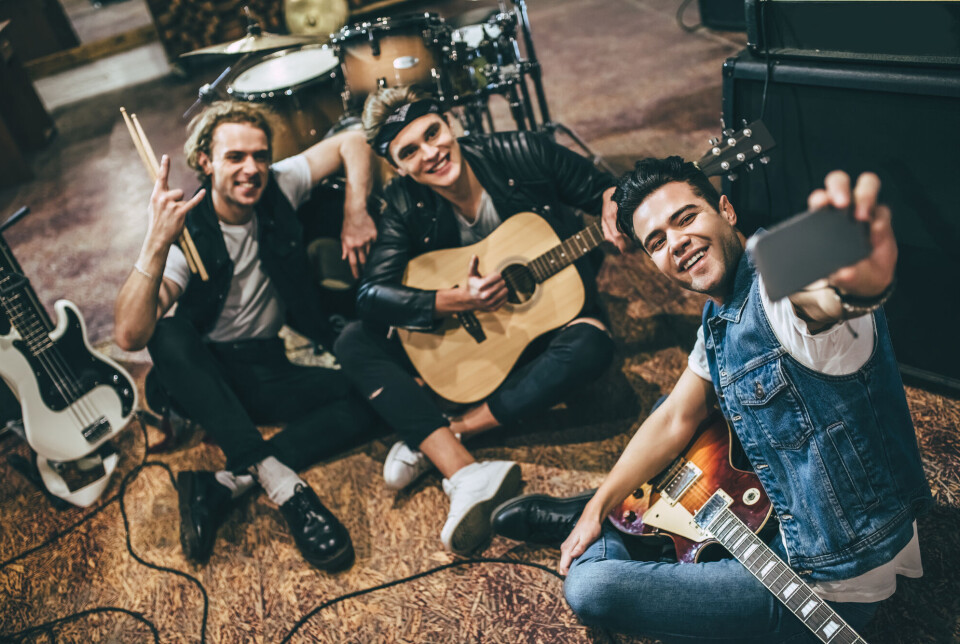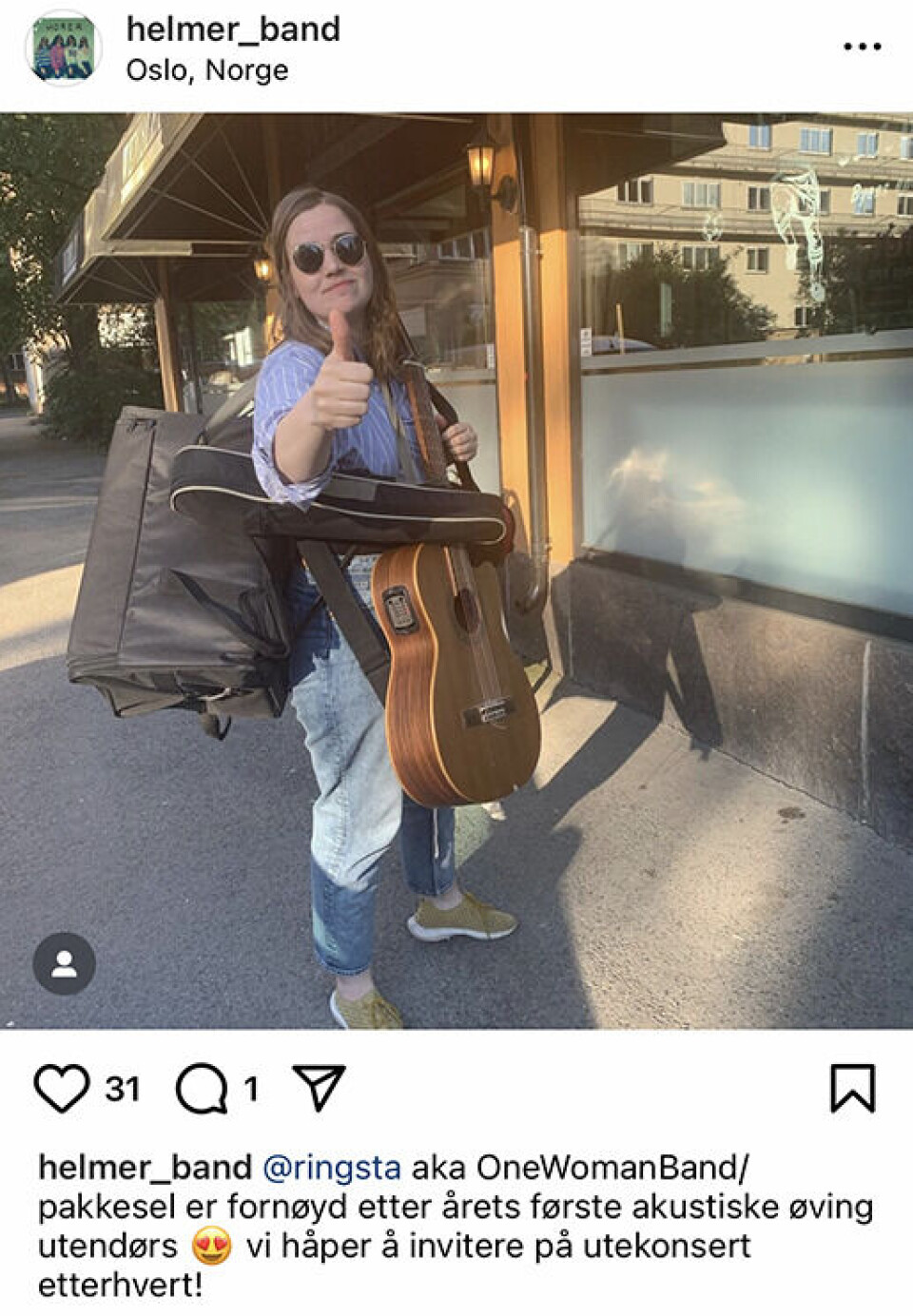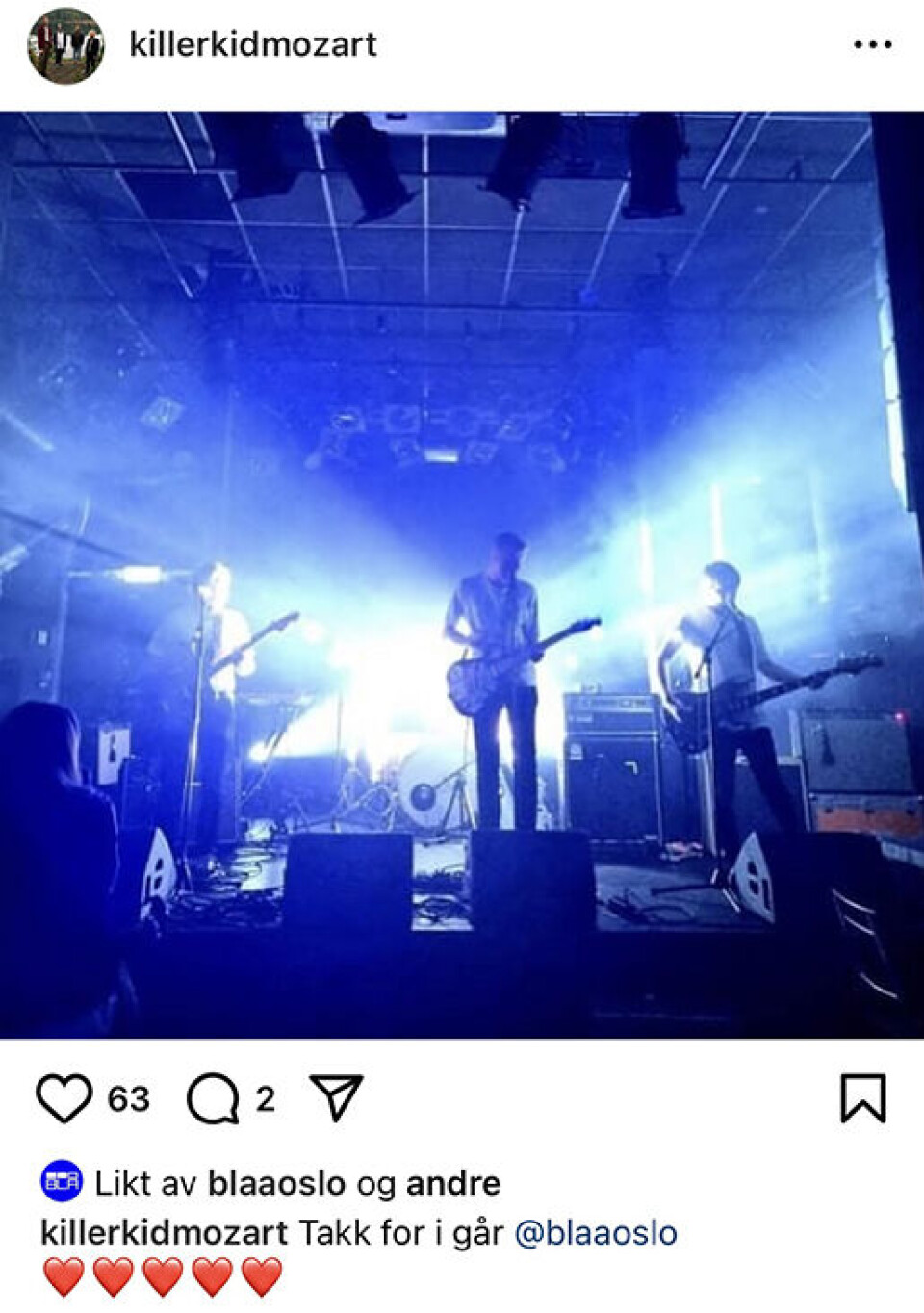THIS CONTENT IS BROUGHT TO YOU BY University of Oslo - read more

Music artists are dependent on social media
“Today, the creative aspect of a music project also involves Instagram and TikTok,” musicologist says.
Meeting up with friends for band practice, coming up with new songs, arranging a gig through acquaintances, inviting friends, and putting up posters. Playing for admission and free beer.
That is roughly what it was like to play in a band when musicologist Eirik Jacobsen was growing up.
But as he began to play guitar in several bands throughout the 2000s, he noticed that more and more of the time he spent on music was actually going towards creating content for social media. He invited people to Facebook events, recorded videos, posted pictures – and waited for likes, hearts, and shares.
“Our outward image was very much shaped by the identity we created on social media,” Jacobsen says, and he began to wonder if other musicians felt the same way.

He has now researched how indie musicians in Oslo use social media.
Because it is not just Taylor Swift and Beyoncé who are on TikTok and Instagram. Even small and independent music projects have become completely dependent on the global tech platforms, and this has consequences for creative work.
Without social media, you are invisible
Eirik Jacobsen has interviewed 21 Oslo-based musicians from different genres. They play everything from reggae to black metal, but they all fall into the 'indie' category. They have neither record labels nor management backing them.
“Most of them prefer to focus on the creative aspects of a music project, and just make and play music,” Jacobsen says.
But all of them recognise the necessity of spending time on social media. It opens doors to a larger audience but also creates frustration.
“It's not an option not to be there, because then they would be completely invisible. And most of them feel a continuous pressure to constantly come up with new content,” he says.
When they go to band practice, for example, they must remind themselves to take a photo or record a video to have something to share with their followers.
Record labels still hold the most power
When social media emerged, many thought it would democratise the music industry. With a platform that gave all musicians direct access to their audience – what need would there be for record labels, PR agencies, and managers?
It turns out they still play an important role.
“When everyone has the same opportunity to use social media, the internet, and streaming services, it creates an insane competition for attention,” Jacobsen says.
This shapes how people work with social media and means that having money is an advantage.
“An example of how money makes a big difference is that the more you pay to sponsor posts on Facebook, the greater reach you get. If you have a record label or management that can spend a bit of money on you, you have a great advantage,” he says.

Almost all the artists Jacobsen interviewed had paid to promote posts on Facebook. But the dream is to hit the mark so well with the content that it goes viral.
“There are examples of artists who've hit the jackpot with algorithms. Norwegian Boy Pablo reached an incredible number of people with a video on YouTube,” Jacobsen says.
“But when you consider how many music projects exist in the world, very few of them manage to achieve that,” he says.
Small artists can succeed on TikTok
Music artists often use multiple social media platforms. They create events on Facebook for gigs, have dedicated pages on Facebook and Instagram for their band where they share pictures and videos, and have countdowns to single releases and new albums. They link their social media accounts to Spotify and other streaming services where listeners can access their music.
“But many of those I interviewed also use TikTok,” Jacobsen says.
He found this surprising.
“They were adults, ranging from their early twenties to mid-thirties. But even though they weren't that used to using TikTok, creating a snappy video that might catch on was important for showcasing their music to a young audience,” he says.
According to the music researcher, TikTok is currently the most important platform for big stars and the powerful record labels. But when Beyoncé created a TikTok account in July 2022, several small Oslo-based artists were already on board.
One of the artists Jacobsen interviewed shared a video where he asked viewers to guess a song based on just one chord.
“It caught on very well and went viral, which led him to make more. The fact that he hit the mark with those videos has significantly boosted the visibility of his music project,” he says.
Using humour to maintain integrity
Posting content on social media can present many dilemmas. When a music project that started with an audience of friends gains more followers—who are you really speaking to?
“It can be jarring when they move beyond their core audience. If you know you're communicating with your mum, dad, and best friend, you can use inside jokes and be direct. But most want to speak to a larger audience,” says Jacobsen.
And if you have a video that is barely 15 seconds long, Jacobsen is clear on what the key is:
“Humour, without a doubt.”
Being funny is also about maintaining artistic integrity.
“It might be the Scandinavian Law of Jante at play, but many are concerned with not appearing to take themselves too seriously. Therefore, they must balance between two extremes: being on social media and following the platform's rules to reach out, while at the same time not appearing pretentious,” he says.
The solution is videos where it is clear that they are being tongue-in-cheek. One of the artists, for example, filmed himself playing a song on an acoustic guitar. The performance of the song was intimate and atmospheric, and the quality of the video was impeccable.
“But he recorded the video in the bathroom. Thus, the setting showed that he didn't take himself too seriously, even though the musical quality was high,” he says.
Social media has changed what a music projects entails
One of Jacobsen’s findings is that social media is far more than just a promotional channel for music – it has become a part of the creative project.
“It’s still important to convey a recorded song to the audience, but social media is now part of a larger package” he says.
In addition to the music, the audience also gets to know the people behind it. Whether it's when they’re baking cakes, working out – or at band practice.
“For many, it becomes a window into the private lives of the musicians they follow,” he says.
Even though what the audience sees appears relaxed and personal, it is often carefully thought out exactly what aspects of daily life are shared.
“You still have an image you want to maintain as a musician and artist. Therefore, it becomes very important that what you share of yourself as a private individual supports the identity you want to have musically,” he says.
Jacobsen also sees reciprocity between artists and their audience.

“The audience contributes to creating content that bands use to present themselves, such as videos and pictures for Instagram. This kind of interaction didn’t exist before," he says.
Music communities flourish across the internet and physical venues
A local music community often forms around a venue, becoming a stage in multiple senses of the word. With the advent of social media, physical venues have only become more important, Jacobsen believes.
“You can often see how many bands thank the venue when they post on Instagram after a gig,” he says.
Both bookings and getting to know musicians with similar interests happen across the internet and physical venues.
“Before, you had to show up at a club to get a sense of what the music scene was like, but now you can follow the club on social media. Most venues post a lot and help generate engagement around the music,” he says.
Additionally, social media brings local music scenes closer together in ways that were not possible before the internet.
Jacobsen believes that for individuals, both getting in touch with and feeling a sense of belonging to music communities has probably become easier since the rise of social media.
“If you enter the right keywords, you can find closed groups or a venue with a community that shares your interests. In that sense, social media can make underground scenes more visible,” he says.
Music is more than just superstars
Jacobsen believes it is important for music researchers not to focus solely on big stars.
“Most music projects are small and independent, and they form the foundation for musical life all over the world,” he says.
This means that when there are changes in social media, it affects Beyoncé, but also the local level in your hometown, whether it be Seattle, Oslo, or Porsgrunn.
“When new media technology arrives, it changes how artists work with music. When the radio came in the 1920s, it transformed the entire music industry. The same happened with TV and MTV, and more recently, social media,” says Jacobsen.
Reference:
Jacobsen, E. 'Independent and Dependent: Negotiations Between Contemporary Indie Music and Social Media', Doctoral Thesis at the University of Oslo, 2024. (About the dissertation)

This content is paid for and presented by the University of Oslo
This content is created by the University of Oslo's communication staff, who use this platform to communicate science and share results from research with the public. The University of Oslo is one of more than 80 owners of ScienceNorway.no. Read more here.
More content from the University of Oslo:
-
Queer opera singers: “I was too feminine, too ‘gay.’ I heard that on opera stages in both Asia and Europe”
-
Putin’s dream of the perfect family
-
How international standards are transforming the world
-
A researcher has listened to 480 versions of Hitler's favourite music. This is what he found
-
Researcher: "AI weakens our judgement"
-
New, worrying trend among incels, according to researcher





































